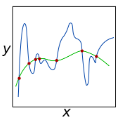Generative Adversarial Networks (GANs) are a class of deep generative models which aim to learn a target distribution in an unsupervised fashion. While they were successfully applied to many problems, training a GAN is a notoriously challenging task and requires a significant amount of hyperparameter tuning, neural architecture engineering, and a non-trivial amount of "tricks". The success in many practical applications coupled with the lack of a measure to quantify the failure modes of GANs resulted in a plethora of proposed losses, regularization and normalization schemes, and neural architectures. In this work we take a sober view of the current state of GANs from a practical perspective. We reproduce the current state of the art and go beyond fairly exploring the GAN landscape. We discuss common pitfalls and reproducibility issues, open-source our code on Github, and provide pre-trained models on TensorFlow Hub.
翻译:创世网络(GANs)是一组深层次的基因模型,旨在以不受监督的方式学习目标分布。尽管这些模型成功地应用于许多问题,但培训GAN是一个众所周知的艰巨任务,需要大量的超参数调制、神经结构工程和非三轨数量的“tricks ” 。许多实际应用的成功,加上缺乏量化GANs失败模式的措施,导致了大量拟议的损失、正规化和正常化计划以及神经结构。在这项工作中,我们从实际角度清醒地看待GANs的现状。我们复制了艺术的现状,超越了对GAN景观的公平探索。我们讨论了常见的陷阱和再生问题,在Github上公开了我们的代码,并在TensorFlow Hub上提供了预先培训的模型。




